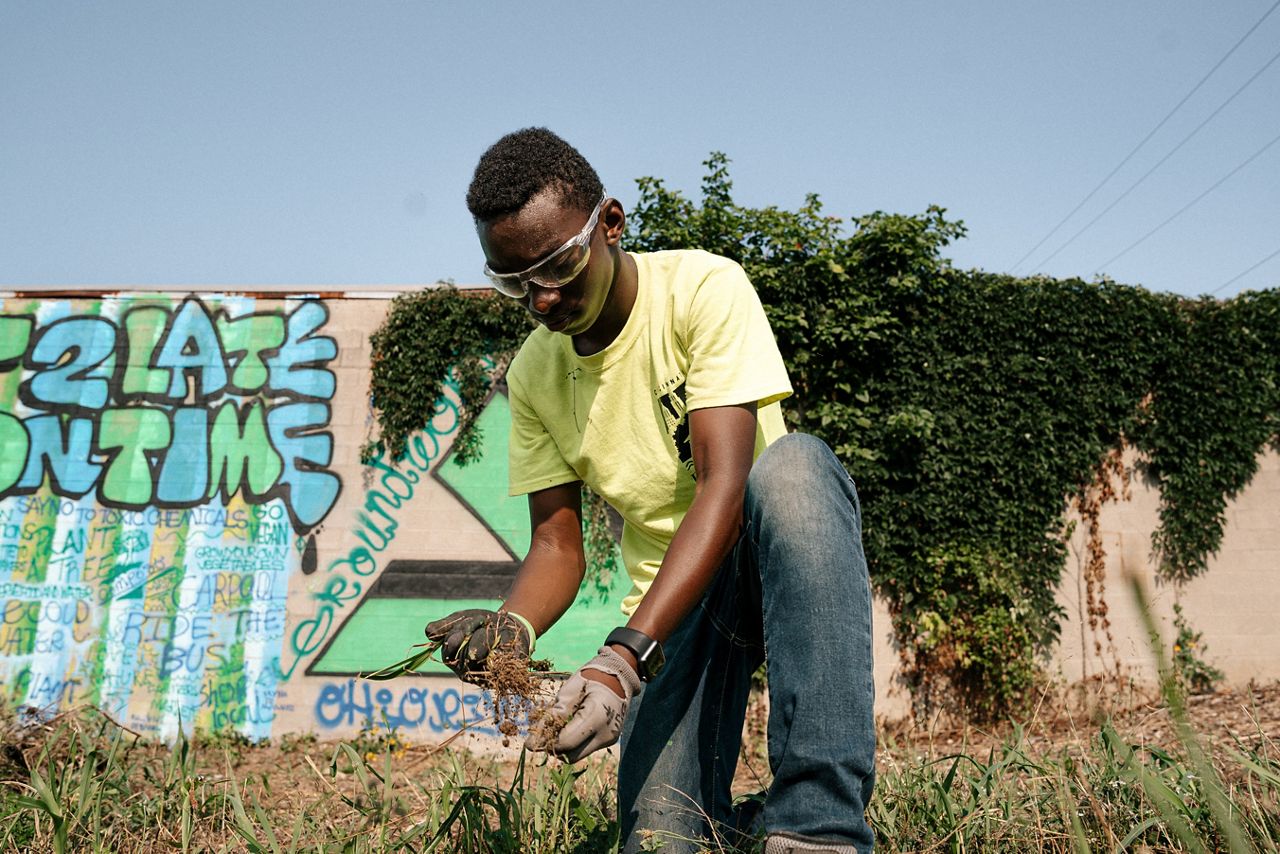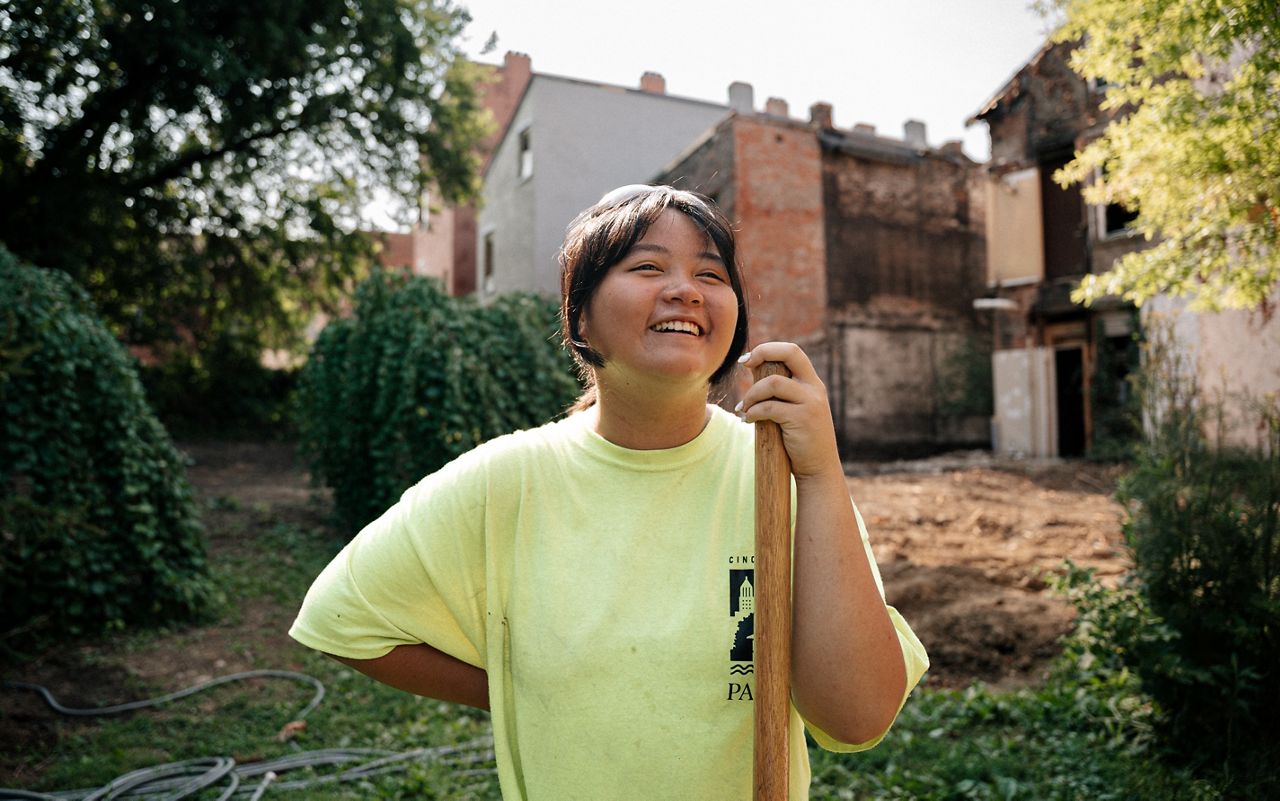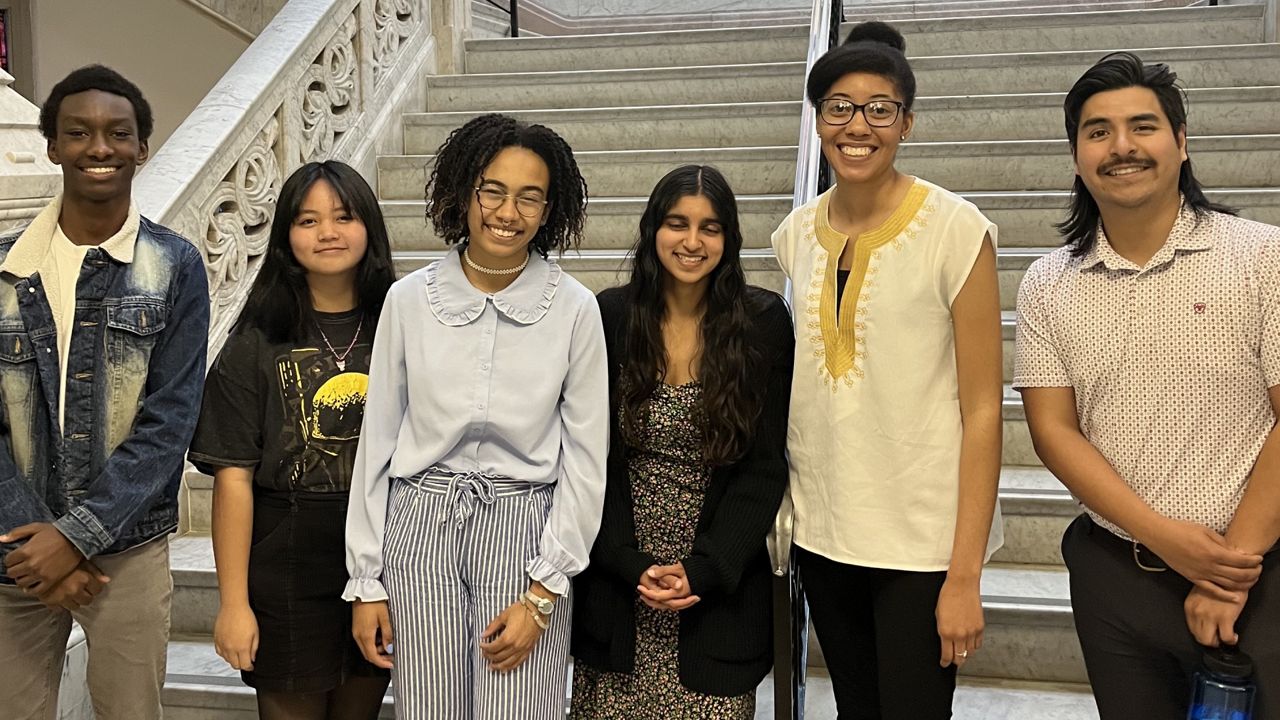CINCINNATI — Thousands of environmentalists, community advocates, and business and government leaders took part in a year-long process to create Cincinnati’s new climate action policy.
But perhaps the most significant voices heard during the Green Cincinnati Plan process were those not even old enough to vote for the City Council members who approved it.
What You Need To Know
- The formation of the Youth Environmental Council last year aimed to ensure local teens would have a voice in the Green Cincinnati Plan
- Teens and young people will bear the biggest burdens of climate change
- The 11-member council offered feedback, led community engagement sessions and helped craft the final 172-page document
- One of the group's next projects is to find ways to simplify the Green Cincinnati Plan for younger audiences
Althaea Adams-Van Schaik, Aana Shenai and Bienvenue Niyonkuru were three of the teenage leaders of the inaugural Cincinnati Youth Environmental Council (YEC).
The 11-member body — created last year by City Council and operated by Groundwork Ohio River Valley — to help offer a youthful point of view on climate change justice, sustainability efforts and overall environmental action. The group’s biggest task was working on the recently approved Green Cincinnati Plan.
Four team members formed a leadership group that continued throughout the months-long development period. Each teen went through training on community engagement, urban planning, climate science and social activism.
The YEC presented its initial findings and suggestions to City Council’s Climate, Environment and Infrastructure Committee on April 11. It’s chaired by City Council Member Meeka Owens.
“The policies we enact sometimes take a long time to actually lead to results, so these are the policies are going to be affecting our generation the most,” Shenai said. “It’s important that young people understand that fact and give their input now before it’s too late.”
Helping young environmentalists find their voice
Shenai, a 17-year-old at Seven Hills School, wants to major in environmental studies or environmental science. She joined the program to learn more about the behind-the-scenes element of creating policy and working with government officials.
One of her first assignments on YEC was to join two subcommittees for the Green Cincinnati Plan, the city’s playbook for addressing climate action. It receives an update every five years after various community meetings and feedback from residents.
Youth from the YEC and other organizations spent over 150 hours at more than 40 Green Cincinnati Plan meetings, according to Tanner Yess, Groundwork's executive director. The teens contributed dozens of recommendations that led to the creation of 30 goals, 40 strategies and 130 actions aimed at making Cincinnati more climate resilient in the decades to come.
City Council approved the 172-page document on April 12.

“You can make a difference no matter your age,” said Adams-Van Schaik, a Walnut Hills High School senior.
“You don’t need to be a CEO or a City Council member to talk to important people like,” the 18-year-old added. “At first, I was a little intimidated, but I learned there’s no reason to be scared. We all care about our city.”
Attending those meetings helped Adams-Van Schaik learn more about the Green Cincinnati Plan — something she knew little about previously. They also connected her with City Council members, organizations such as Green Umbrella and the Ohio Environmental Council, and residents of all ages from across the city.
“The experience helped me find my voice as a resident,” Adams-Van Schaik said.
“I felt like I was on the same level as everybody. Nobody was like, ‘Oh, look at these little environmental people. They’re so cute,’” she added. “It was like they were like talking to us like we were also professionals.”
Prior to joining the YEC, Adams-Van Schaik was a member of Groundwork’s “Green Team,” which handles more hands-on environmental tasks, such as urban agriculture and green infrastructure.
Adams-Van Schaik plans to attend Miami University in Oxford, Ohio, next year and major in botany. She’s interested in revegetation and wetland restoration and wants to learn more about natural alternatives for use in fashion and other industries.
Her interest in the environment isn’t unique among her classmates, Adams-Van Schaik said. The school has a popular Sustainability Club and a Bio-Eco Club.
“It’s good to have people who’ll be leading in the future getting involved now, so that confidence and experience we’re going to be so important,” Adams-Van Schaik said.
The importance of ‘green’ education
One of the youngest members of the YEC is Bienvenue Niyonkuru. The 16-year-old doesn’t know what profession he wants to choose. He’s debating becoming a pastor, pursuing a career in nursing or even joining the military, he said.
His passion for urban forestry attracted him to the Green Team two years ago.
“Even if we can’t vote, we can have an impact on the decisions that affect Cincinnati, and the state and possibly the world,” Niyonkuru said.
The Aiken High School student believes outreach to young people is important, and it’s something governments should start doing more at all levels. He noted his school has environmental programming, but he expressed a desire to have more such learning opportunities outside of the classroom.
Niyonkuru thinks the YEC could help amplify the Green Cincinnati Plan messaging to friends, neighbors and classmates.
“What we want is for the next generation and the generation after that, to experience what we have,” he added. “We want to help make sure they care enough about the environment to make that change.”

Youth education about this topic is something “near and dear” to the heart of Kylie Johnson, the Southwest Ohio regional field director for the Ohio Environmental Council.
Before joining the OEC, Johnson worked for The Action for the Climate Emergency, a national nonprofit dedicated to working with high school students on environmental issues.
Johnson represented the OEC on the Green Cincinnati Plan steering committee. She also helped lead the Community Activation subcommittee.
Having a unique range of voices, perspectives and backgrounds was vital to that process, Johnson said. With an emphasis on equity, the goal was to ensure it prioritized the needs of those most vulnerable to climate change.
Young people are going to bear the biggest burden, Johnson said.
“They’re also our next generation of leaders who are going to pick up the baton and continue to lead this work,” she added. “It’s really important that we’re engaging them now and educating them about the science, consequences and solutions of climate change, while also empowering them and equipping them with the tools that they need to protect their futures.”
The work isn’t over yet
Johnson attended YEC’s presentation during the Climate, Environment and Infrastructure Committee meeting. Owens opened the floor to the student to share findings and detail their work on the Green Cincinnati Plan and beyond.
Shenai suggested the document wasn’t approachable enough. She and the YEC team proposed using simplified digital assets to make information about best practices and impacts “more digestible.”
The YEC is going to play a key part in that, Owens said. Initial thoughts are for the teens to report back to City Council and take part in other programs beyond the Green Cincinnati Plan.
Her goal is for them to feel like “peers” at City Hall.
“The work we’re doing on climate change, sustainability, resiliency — it’s all about what we’re doing now, and the environment and planet and communities were’ going to leave behind for generations to come,” Owens said.
Yess and the Groundwork team are recruiting new members to the YEC through Aug. 31. They’re adding five more spots to the council for at least the next year, Yess said.
Adams-Van Schaik will be too old to take part in the YEC next year. She’ll miss it, she said, but she believes she’s leaving the council and the city in excellent hands.
“We know we can do this,” Adams-Van Schaik said.



